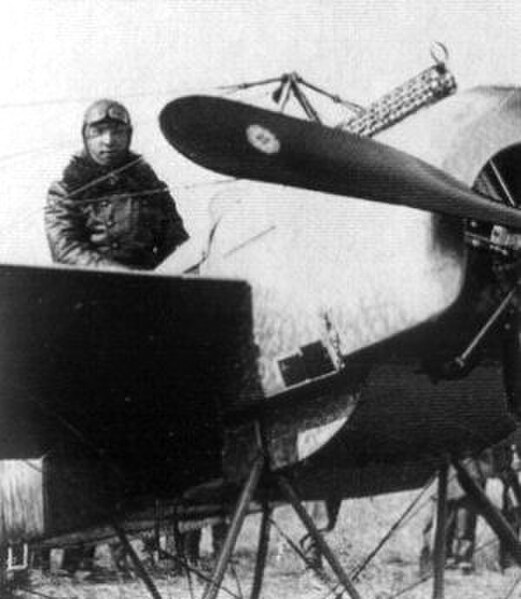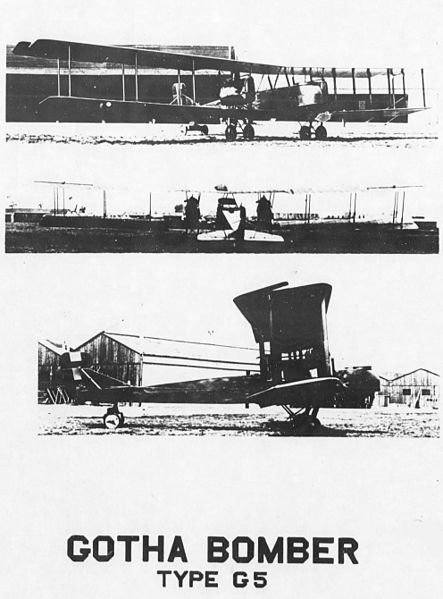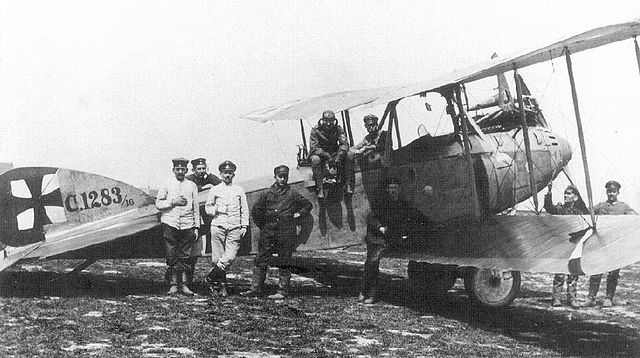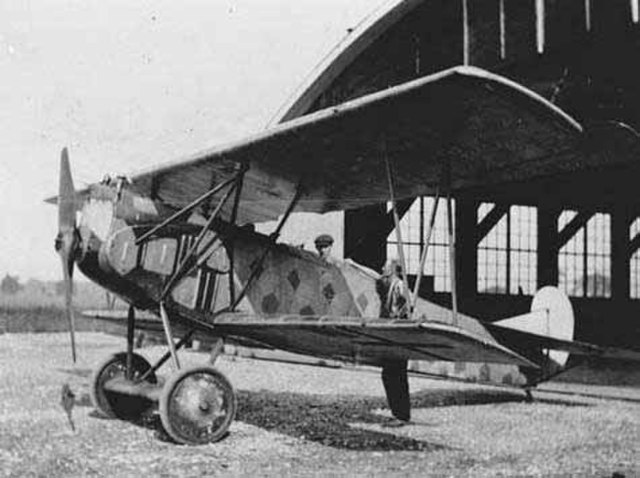The Fokker Scourge occurred during the First World War from July 1915 to early 1916. Imperial German Flying Corps units, equipped with Fokker Eindecker fighters, gained an advantage over the Royal Flying Corps (RFC) and the French Aéronautique Militaire.
Kurt Wintgens' Fokker M.5K/MG "E.5/15" Eindecker, flown by him on 1 July 1915, in the first successful aerial engagement in an aircraft fitted with a synchronised machine gun
Vickers "gunbus" biplanes had the engine behind the pilot which gave an unobstructed field of fire for the machine gun
Otto Parschau's "green machine" (A.16/15, factory s/n 216) with a Stangensteuerung synchroniser; the "prototype" Fokker Eindecker.
Otto Parschau's second Eindecker, E.1/15, with experimental "mid-wing" modification which became standard on production E.Is
The Deutsche Luftstreitkräfte —known before October 1916 as Die Fliegertruppen des deutschen Kaiserreiches —was the air arm of the Imperial German Army. In English-language sources it is usually referred to as the Imperial German Air Service, although that is not a literal translation of either name. German naval aviators of the Marine-Fliegerabteilung were an integral part of the Imperial German Navy. Both military branches operated aeroplanes, observation balloons and airships.
Leutnant Max Immelmann with his first Fokker Eindecker, E.13/15
Gotha G.V
Allbatros C.VII# C.1283/16
Fokker D.VII used by the Luftstreitkräfte








